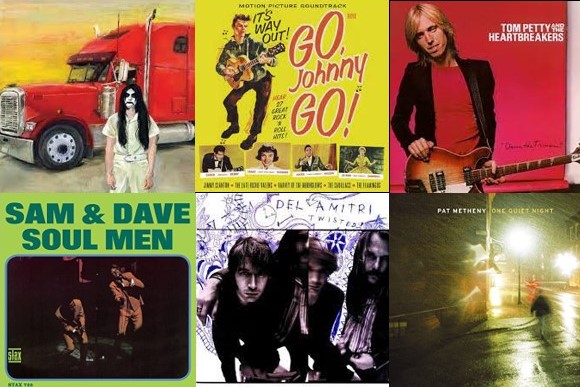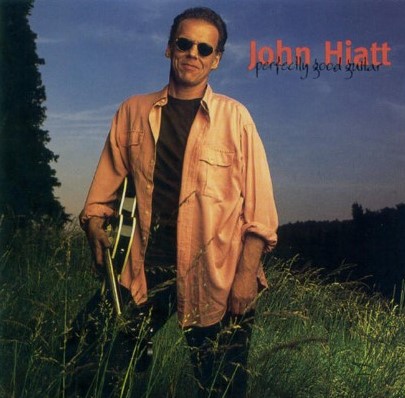Coincidentally, I stumbled across this previous post when searching my blog for something else and thought it would be worthwhile republishing. This piece, which has been slightly edited, first appeared about 4.5 years ago. I realize it’s lengthy but hope you’ll find it worth your time, especially if you’re into protest singer-songwriters.
Phil Ochs, Brilliant Yet Widely Obscure Troubadour
What do Robert Allen Zimmerman and Philip David Ochs have in common? Both wrote brilliant protest songs in the ’60s. The difference? Robert changed his name to Bob Dylan and became one of the most famous music artists of our time. Philip chose to perform as Phil Ochs and remained largely obscure outside singer-songwriter circles. That’s a shame!
Until recently, I had never heard of Phil Ochs myself. Then I saw somebody ranting on Facebook that Bob Dylan undeservedly gets all the credit for being this brilliant protest singer when the recognition should really go to Ochs. The truth is while both artists at some point were important protest singer-songwriters, none of them invented the genre. According to Wikipedia, the tradition of protest songs in the U.S. long predates the births of Dylan and Ochs – in fact going all the way back to the 18th century.
One of the important forerunners to the 1950s and 1960s protest singer-songwriters were the Hutchinson Family Singers, who starting from 1839 became well known for singing about social issues, such as abolition, war and women’s suffrage. And let’s not forget Woody Guthrie, who was born in 1912 and started learning folk and blues songs during his early teens. Over a 26-year-period as an active music artist, Guthrie wrote hundreds of political, folk and children’s songs. He was a major influence on numerous other songwriters who in addition to Dylan and Ochs included Johnny Cash, Pete Seeger, Harry Chapin, Bruce Springsteen, John Mellencamp and many other former and contemporary artists.

‘I get it,’ you might think, ‘but who the hell is Phil Ochs?’ Sadly, it’s a pretty rough story, and it doesn’t have a Hollywood happy ending.
Ochs was born on December 19, 1940 in El Paso, Texas. His dad Jakob “Jack” Ochs was a physician from New York, and his mom Gertrude Finn Ochs hailed from Scotland. The two met there and got married in Edinburgh where Jack was attending medical school at the time. After their wedding, they moved to the U.S. Jack joined the army as a doctor and was sent overseas close to the end of World War II. He returned as a sick man with bipolar disorder and depression.
Jack’s health conditions prevented him from establishing a successful medical practice. Instead, he ended up working at a series of hospitals around the country and frequently moving his family. As a result, Phil Ochs grew up in different places, along with an older sister (Sonia, known as Sonny) and a younger brother (Michael). His father was distant from the family, eventually got hospitalized for depression, and passed away from a brain bleeding in April 1963. Phil’s mother died in March 1994.

During his teenage years, Ochs became a talented clarinet player. Prior to the age of 16, he was principal soloist with the orchestra at the Capital University Conservatory of Music in Columbus, Ohio. Although Ochs had become an accomplished classical instrumentalist, he soon discovered the radio and started listening to the likes of Buddy Holly, Elvis Presley, Hank Williams and Johnny Cash.
Initially, Ochs wanted to become a journalist. Well, he of sort did, combining his interest in writing about politics with music. During his journalism studies at Ohio State University, he met fellow student, activist and future folk singer Jim Glover in the fall of 1960, who introduced him to the music of Pete Seeger, Woody Guthrie and The Weavers, and taught him how to play guitar. It wouldn’t take long before Ochs merged his interest of politics and music and started writing his own songs. He preferred to characterize himself as a topical rather than a protest singer.
Glover and Ochs started performing as a duo called The Singing Socialists and later The Sundowners but broke up before their first professional gig. Glover went to New York, while Ochs started performing professionally at a local folk club in Cleveland. In 1962, he went to the Big Apple as well and soon established himself in the Greenwich Village folk music scene. Ochs described himself as a “singing journalist,” explaining his songs were inspired by stories he saw in Newsweek. By the summer of 1963, he had developed a sufficiently high profile and was invited to perform at the Newport Folk Festival, along the likes of Dylan, Joan Baez and Peter, Paul & Mary.
Ochs’ debut album All The News That’s Fit To Sing, an allusion to The New York Times‘ slogan “All the news that’s fit to print,” appeared in 1964. Here is Ballad of William Worthy. The tune tells the story about an American journalist who traveled to Cuba despite the U.S. embargo and was forbidden to return to the U.S. Check out the brilliant lyrics of this tune – safe to assume Ochs’ words didn’t endear him to the Johnson Administration.
In 1965, Ochs’ sophomore album I Ain’t Marching Anymore came out. Here’s the excellent satirical anti-war tune Draft Dodger Rag, which quickly became an anthem of the anti-Vietnam war movement.
After Ochs’ first three albums with Electra Records had gone nowhere commercially speaking, he signed with A&M Records and in October 1967 released his fourth studio record Pleasures Of The Harbor. Unlike his first three folk music-oriented records, the album went beyond folk, featuring elements of classical, rock & roll, Dixieland and even experimental synthesized music. Apparently, the idea was to produce a folk-pop crossover. While the album included great tunes, it’s safe to say it didn’t bring Ochs commercial success. Here is Outside Of A Small Circle Of Friends, which became one of Ochs’ most popular songs. The tune was inspired by the case of a 28-old woman who was stabbed to death in front of her home in Queens, New York, while dozens of her neighbors reportedly ignored her cries for help.
Tape From California is Ochs’ fifth album. Released in July 1968 on A&M Records, it continued his shift away from straight folk-oriented protest songwriting, though he was far from abandoning topical songs. The War Is Over is a tune that was inspired by poet Allen Ginsberg who in 1966 declared the Vietnam war was over. Ochs decided to adopt the idea and organize an anti-war rally in Los Angeles, for which he wrote the song.
Phil Ochs’ final studio album came out in February 1970. Weirdly, it was called Greatest Hits, even though it was not a compilation but a collection of 10 new tracks. Most of the record was produced by Van Dyke Parks, who previously had appeared on Tape From California, contributing piano and keyboards to the title track. Greatest Hits featured an impressive array of guest artists, including Clarence White and Gene Parsons, both from the Byrds; Ry Cooder; Jim Glover; and members of Elvis Presley’s backing band, among others. The album cover was an homage to Elvis, showing Ochs in a gold lamé suit reminiscent of the outfit Elvis wore for the cover of his 50,000,000 Elvis Fans Can’t Be Wrong greatest hits compilation. Here is Jim Dean Of Indiana, a tune about the actor James Dean, who like Elvis was one of Ochs’ idols.
Greatest Hits was Ochs’ final attempt to connect with average Americans, who he was convinced weren’t listening to topical songs. Disillusioned by key events of 1968, including the assassinations of Martin Luther King, Jr. and Robert F. Kennedy, the police riot in Chicago around the Democratic National Convention and the election of Richard Nixon, Ochs felt he needed to be “part Elvis Presley and part Che Guevara,” as Wikipedia puts it. Ochs supported the album with a tour, performing in the Elvis-like suit and being backed by a rock band, singing his own songs, along with tunes by Buddy Holly, Elvis Presley and Merle Haggard. But his fans weren’t sure what to make of the “new Phil Ochs.”
Pretty much from there, things went downhill for Ochs. He developed writer’s block and slipped into depression and alcoholism. He did not release any additional records. On April 9, 1976, Ochs committed suicide by hanging himself in the home of his sister Sonny. He was only 35 years old.
I’d like to conclude this post with a few quotes I found on Life of a Rebel, a blog dedicated to Ochs. “As a lyricist, there was nobody like Phil before and there has not been anybody since,” said fellow folk singer Dave Van Ronk. “He had a touch that was so distinctive that it just could not be anybody else. He had been a journalism student before he became a singer, and he would never sacrifice what he felt to be the truth for a good line.” In a note to Ochs in 1963, Pete Seeger wrote, “I wish I had one tenth your talent as a songwriter.” And what did the mighty Bob Dylan tell Broadside magazine in 1964? “I just can’t keep up with Phil. And he’s getting better and better and better.”
– END –
If you’re still here, thanks for reading this post, which first was published on October 13, 2019.
Sources: Wikipedia; Life of a Rebel; YouTube












:format(jpeg):mode_rgb():quality(90)/discogs-images/R-1368224-1283619944.jpeg.jpg)
:format(jpeg):mode_rgb():quality(90)/discogs-images/R-1368224-1283538812.jpeg.jpg)